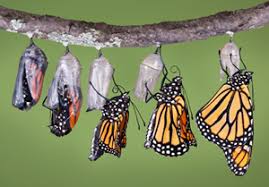
When I was a flight attendant I used to fly to San Francisco often, but it wasn't until 1982 that I saw the real coast of northern California. At the time, I was working on a degree in Biology at the University of Miami with a focus on ornithology (the study of birds.) Dr. Oscar Owre, my ornithology professor, Bob Kelley, UM math professor and then President of Miami's Tropical Audubon Society, and Dan Cary, a grad student studying the Everglade kite, were all going to the ABA (American Birding Association) conference at Asilomar in Monterey, CA. I could fly free, so, as I recall, I invited myself along.
 |
| photos.igougo.com |
We took two field trips: One to Point Lobos, where I saw my first sea otter asleep in a bed of bull kelp, and a landscape that took my breath away. This Florida gal had never seen anything like those cliffs and that roiling, icy sea. I fell instantly, permanently in love with northern CA. (Nine years later I moved to the much more remote Mendocino Coast.)
 |
hibernating monarchs
geog.ucsb.edu |
Our second field trip was to see the Monarch butterflies in Pacific Grove. It was late October.
The following is an edited version of an article I found on this website.
Monarch butterflies go through four stages during one life cycle, and through four generations in one year. The four stages of the
monarch butterfly life cycle are the egg, the larvae (caterpillar), the pupa (chrysalis), and the adult butterfly.
In March and April butterflies lay their eggs on milkweed plants. The eggs hatch about 4 days later into baby caterpillars. A baby caterpillar feeds on the milkweed until it's full grown in about 2 weeks, then it attaches itself to a stem or a leaf and transform into a chrysalis.
 |
| monarch-butterfly.com |
From the outside, the 10 day-long chrysalis, or pupa, phase seems to be a time when nothing is happening, however within the chrysalis the body of the caterpillar is undergoing a remarkable transformation, called metamorphosis, to become the beautiful butterfly that will emerge.
The monarch butterfly will emerge from the pupa and spend the next 2 - 6 weeks of its life visiting flowers, finding a mate and laying her eggs before this first generation monarch butterfly dies.
 |
| monarch-butterfly.com |
The second generation of monarch butterflies is born in May and June, goes through exactly the same four stage life cycle, as does the third generation which is born in July and August and dies 2 - 6 weeks later.
The fourth generation of monarch butterflies is a little bit different than the first three generations. The fourth generation is born in September and October and goes through exactly the same process as the first, second and third generations except for the dying part. Instead, this fourth generation of
monarch butterflies migrates to warmer climates like Mexico and California and will live for six to eight months until it is time to start the whole process over again.
Monarch butterflies are not able to survive the cold winters of most of the United States so they migrate south and west each autumn to escape the cold weather. The monarchs that over-winter in Pacific Grove and other sites along the California coast are from the population that lives west of the Rocky Mountains. These migrating Monarch butterflies use the very same trees each and every year, even though they aren't the same butterflies that were there the year before. Monarch butterflies are the only insect that migrates to a warmer climate, a migration of up to 2,500 miles.
The Monarch butterfly migrates for two reasons: They can not withstand freezing weather in the northern and central continental climates, and the larval food plants do not grow in their seasonal over-wintering sites, so that fourth generation must fly back north to places where the plants are plentiful. Visit
Monarchwatch for information on tracking migrations with a color map.

The monarch overwintering sites are under threat because of people cutting down their favorite trees, but there are groups that collect money to save the important trees and educate people about
monarch conservation. You can learn more about
helping monarchs here.
NOW FOR THE REALLY BAD NEWS
Twelve years ago, a study found that genetically modified Bt corn was lethal to monarch butterflies; recent research shows that another type of GM (Genetically Modified) crop is even more damaging to the beloved insect.
A recently published study says that increasing acreage of GM Roundup Ready (RR) corn and soybeans is a major cause for declining populations of monarch butterflies in North America. The paper, published in the journal Insect Conservation and Diversity, says that increased use of glyphosate herbicide with RR GM crops in the Midwest is killing the milkweed plants, which monarchs rely on for habitat and food. Chip Taylor, an insect ecologist at the University of Kansas, says the proliferation of RR crops and the overuse of glyphosate (Round-up) is the major cause.
(This following article would lead one to believe there is no impact on Monarch butterflies because it is targeting the corn borer larvae. But here's the problem: Pollen drift. Please also read the Cornell study that follows.)
Bt-CORN: WHAT IT IS AND HOW IT WORKS
To transform a plant into a GMO plant, the gene that produces a genetic trait of interest is identified and separated from the rest of the genetic material from a donor organism. A donor organism may be a bacterium, fungus or even another plant. In the case of Bt corn, the donor organism is a naturally occurring soil bacterium, Bacillus thuringiensis, and the gene of interest produces a protein that kills Lepidoptera (the Order of butterflies and moths) larvae, in particular the European corn borer. This protein is called the Bt delta endotoxin. Growers use Bt corn as an alternative to spraying insecticides for control of European and southwestern corn borer.
Bt Delta Endotoxin
The Bt delta endotoxin was selected because it is highly effective at controlling Lepidoptera larvae, caterpillars. It is during the larval stage when most of the damage by European corn borer occurs. The protein is very selective, generally not harming insects in other orders (such as beetles, flies, bees and wasps). For this reason, GMOs that have the Bt gene are compatible with biological control programs because they harm insect predators and parasitoids much less than broad-spectrum insecticides. The Bt endotoxin is considered safe for humans, other mammals, fish, birds, and the environment because of its selectivity. Bt has been available as a commercial microbial insecticide since the 1960s and is sold under many trade names. These products have an excellent safety record and can be used on many crops until the day of harvest.
To kill a susceptible insect, a part of the plant that contains the Bt protein (not all parts of the plant necessarily contain the protein in equal concentrations) must be ingested. Within minutes, the protein binds to the gut wall and the insect stops feeding. Within hours, the gut wall breaks down and normal gut bacteria invade the body cavity. The insect dies of septicaemia as bacteria multiply in the blood. http://www.ca.uky.edu/entomology/entfacts/ef130.asp
Toxic pollen from widely planted, genetically modified corn can kill monarch butterflies, Cornell study shows
The key statement: "Unlike many pesticides, the Bt-corn has been shown to have no effect on many "nontarget" organisms -- pollinators such as honeybees or beneficial predators of pests like ladybugs. But the Bt-modified corn produces pollen containing crystalline endotoxin from the bacterium genes. When this corn pollen is dispersed by the wind, it lands on other plants, including milkweed, the exclusive food of monarch caterpillars and commonly found around cornfields."
PLEASE VOTE YES ON PROP 37



